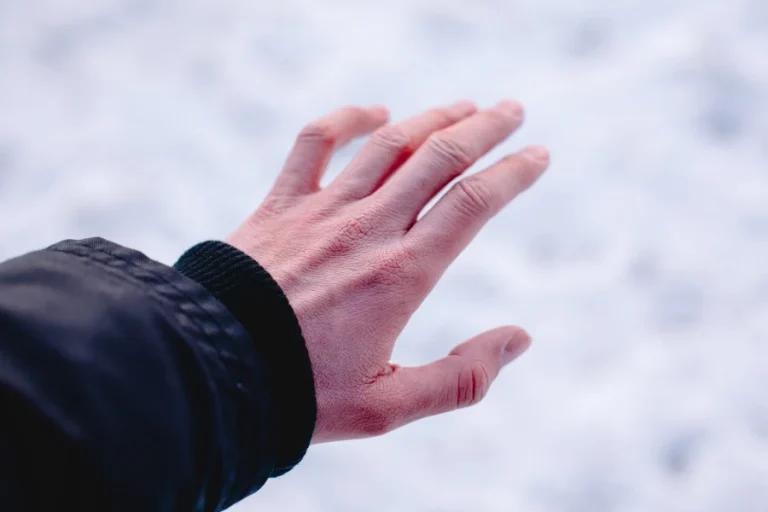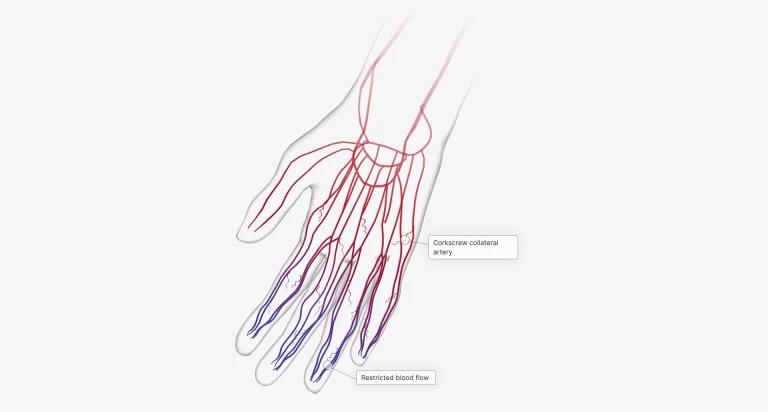Have you ever experienced a sudden onset of redness and itchiness on the skin after being exposed to cold temperatures? Chances are, you might be suffering from a condition known as chilblains. Chilblains are areas of inflammation that occur when the body is exposed to cold or humidity. Though not serious, if left untreated, they can cause discomfort and burning sensations which is why it’s important to understand more about chilblains, how they affect your body and the options for treatment. In this blog post, we will discuss everything you need to know about managing this common wintertime condition.
Chilblains, also known as pernio or perniosis, is a medical condition that primarily affects the body’s extremities, such as the toes, fingers, heels, ears and nose. It affects the skin in response to cold temperatures or other environmental triggers, causing the small blood vessels become inflamed. Chilblains usually appear as red patches on the skin that may swell or become itchy and tender. In some cases, they may blister or become ulcerated. Chilblains typically affect the hands, feet and face, but they can occur anywhere on the body that is exposed to cold temperatures or other triggers.
What are the causes of chilblains?
Chilblains are caused by frequent exposure to cold temperatures. This means that if you spend a lot of time outdoors in cool or cold weather conditions, your risk of developing chilblains increases. While it is not clear why some people are more prone to developing this condition than others, some risk factors may increase your chances of developing chilblains these include:
- Poor circulation (which can be caused by diabetes or other medical conditions)
- Those working outside in cold damp conditions or damp environments
- Smokers
- People with a history in the family of chilblains
- Having low levels of iron in your blood (anaemia)
- Low body weight
- Poor diet
- Having Lupus erythematosus
- Having Raynaud’s disease
What do chilblains look and feel like?
Chilblains can be an uncomfortable and even painful condition. The symptoms of chilblains typically appear as red, itchy swellings on the skin, typically on the hands or feet – although any part of the body that is exposed to cold for a long time can be affected. These swellings may look inflamed, feel hot or hard to touch and often result in intense itching. Over time they can break open and form ulcers if left untreated.
When to worry?
Chilblains are usually easy to treat and not a major cause for concern, but infections can occur from blistered or scratched skin and lead to skin scarring. People with chilblains should consult their GP or Pharmacist if they are re-occurring or they think they have an infection.
How to treat chilblains
To treat chilblains, the affected areas must be kept warm and dry. Applying warm compresses, warm water soaks or heating pads can help with any soreness or itching, along with topical creams and lotions containing hydrocortisone. It is important not to scratch or rub the affected areas of skin or directly overheat the chilblains (Do not put feet in front of direct heat or on radiators or hot water bottles).
Pharmacists are good at recommending products like calamine lotion or witch hazel to help alleviate irritation. Your doctor may also prescribe anti-inflammatory medications to reduce swelling or discomfort. In severe cases, nifedipine, which is a blood pressure medication, can also be prescribed to improve blood flow.
Changing certain lifestyle habits can help prevent chilblains from occurring such as:
- Wearing warm clothing that keeps your whole body warm by maintaining a consistent, steady temperature and keeping your extremities insulated
- Wearing breathable clothing but avoiding tight-fitting shoes or clothing that restrict proper circulation. The free movement of air helps to avoid drastic changes in skin temperature which can lead to chilblains developing
- Ensure that your skin remains healthy by moisturising frequently and keeping cuts and abrasions protected with dressings until they heal completely
- Avoiding drafts and areas of extreme temperature changes and when indoors try keeping the house well-heated
- Eat a healthy diet. Vitamin C is particularly beneficial for people who are prone to developing chilblains, as it helps increase blood flow and heal damaged skin. Fatty acids such as omega-3s can prevent dryness associated with recurrent chilblain outbreaks by keeping the skin cells hydrated
- Exercise regularly as physical activity helps maintain your body temperature and circulation. Regular aerobic exercise not only increases the body’s ability to keep warm but also helps to strengthen the immune system
- Smokers should try and stop. When you stop smoking and allow your body to heal, the tiny blood vessels that have taken a beating due to constant irritation from smoke will become healthier. This will make them better suited for dealing with changes in temperature, making it less likely for chilblains to develop
- If you’ve been outside and your hands are cold, make sure not to warm them up too quickly to avoid causing chilblains
Treatment is not always needed as chilblains often get better on their own. It is important to speak with your doctor if your chilblains become severe or persist for an extended period, as there may be other treatments available that could be more beneficial to you.
Complications of chilblains
- Skin discolouration, red to dark blue that may not be reversible
- Secondary infections from scratching affected areas, lead to sores and abscesses, that can cause permanent damage to the skin
What is the difference between chilblains and frostbite?
Chilblains and frostbite are often confused due to the similarities in their causes and outward appearances. The primary difference between these two conditions is that chilblains can occur any time of year whereas frostbite requires freezing temperatures for an extended period for it to develop. Both chilblains and frostbite affect the skin, resulting in pain, redness, itching, burning sensations, swelling and even ulcerations. Chilblains are caused by poor circulation combined with sudden warming, which occurs without overexposure to wet or cold weather. Frostbite is caused by prolonged exposure to cold temperatures which could be anything from a winter day outdoors, to a cold work environment inside a building. Taking care of one’s skin by limiting exposure to warm environments and never subjecting it to extreme cold can help prevent both chilblains and frostbite.
What is the difference between Raynaud’s and chilblains?
Raynaud’s phenomenon, commonly known as Raynaud’s, and chilblains are similar health conditions that affect the extremities. Raynaud’s is a condition that causes an intense narrowing of the blood vessels, disrupting the regular blood supply throughout the fingers and toes, leading to feelings of coldness or numbness. Chilblains, on the other hand, is a condition caused by an abnormal reaction to cold temperatures, resulting in inflammation and swelling around the affected area.
Raynaud’s mainly impacts circulation whereas chilblains can cause itching and burning sensations as well. Raynaud’s usually involves throbbing or tingling sensations, which can last for several minutes when triggered. On the other hand, chilblains involve redness and swelling of the affected area, with discomfort and itching, often lasting for days.
Both Raynaud’s and chilblains should be treated with care and if symptoms are severe it is best to speak with a doctor for diagnosis and treatment options.
Seek help
Chilblain lesions usually go away within a week without scarring, however, recurrent episodes of chilblains can lead to more severe complications such as infection or permanent damage to the skin tissue. If you experience recurring episodes of chilblain symptoms, contact your healthcare provider for medical advice and treatment options tailored specifically for you so that you can get back out in the cold with confidence!
More information can be found on the Nhs website
Sources
Medical Disclaimer
NowPatient has taken all reasonable steps to ensure that all material is factually accurate, complete, and current. However, the knowledge and experience of a qualified healthcare professional should always be sought after instead of using the information on this page. Before taking any drug, you should always speak to your doctor or another qualified healthcare provider.
The information provided here about medications is subject to change and is not meant to include all uses, precautions, warnings, directions, drug interactions, allergic reactions, or negative effects. The absence of warnings or other information for a particular medication does not imply that the medication or medication combination is appropriate for all patients or for all possible purposes.








